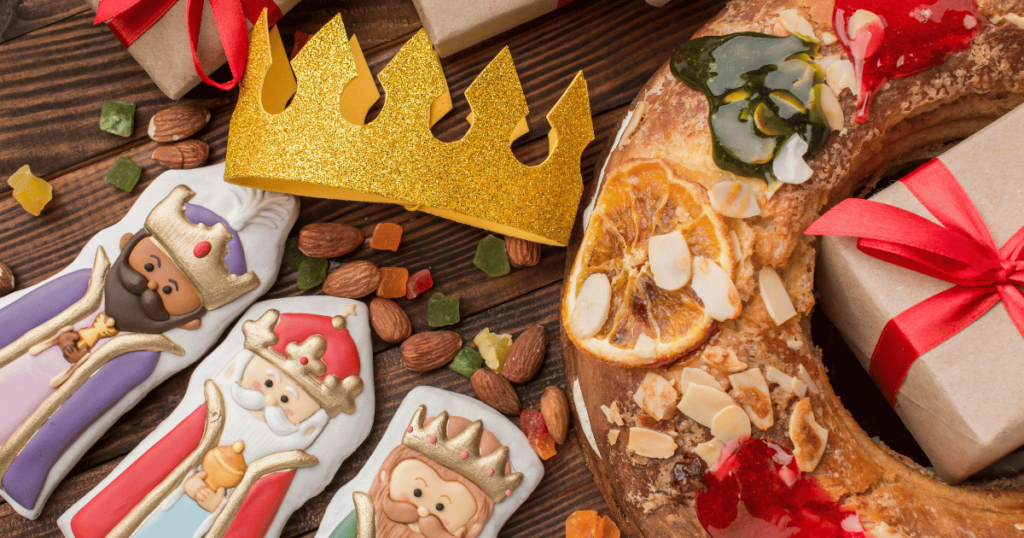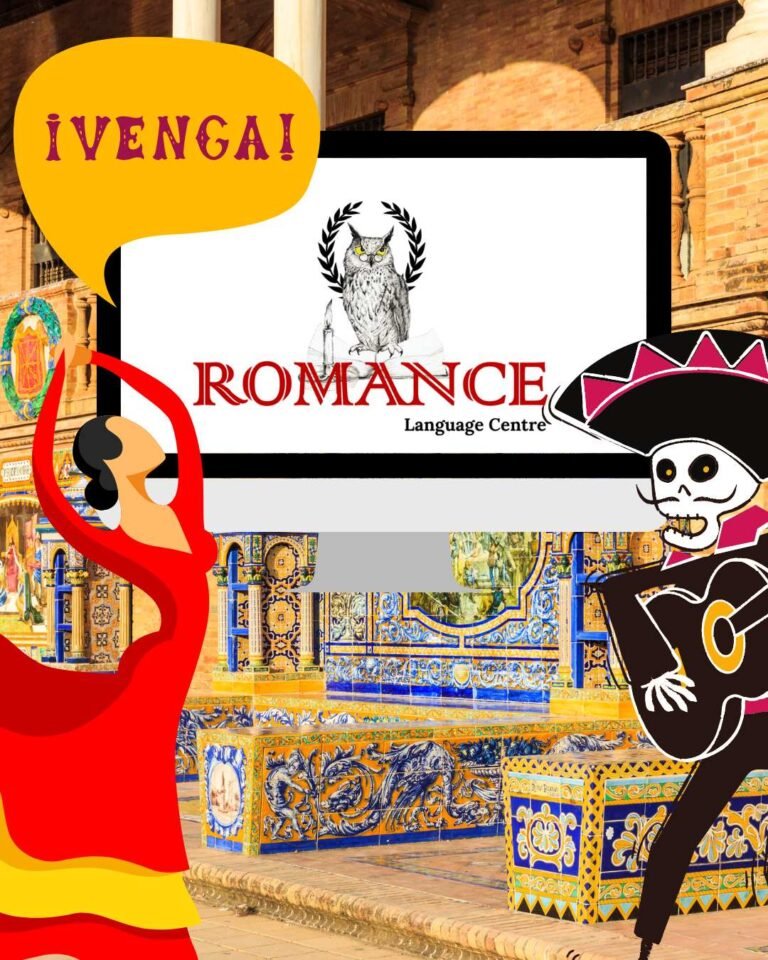When we think of Christmas, most of us picture the typical scene from a hallmark American Christmas movie: the snow, Santa Claus, Christmas tree and the stockings…But do you know of any traditions that are properly Spanish?
As it happens in most parts of the world, the new is often interwoven with the old, and Spain is no exception. Still, some of the most traditional customs still persevere to this day, so let’s take a look at how Spaniards celebrate their winter festivities.
SPANISH KIDS RECEIVE CHRISTMAS GIFTS TWICE
In Spain, the Three Wise Men (los Reyes Magos) are the original gift-bringers although in recent years, most Spanish families have begun to embrace the widely-spread Santa Claus tradition. This doesn’t mean, however, that the old custom has become obsolete. What is more, a survey from 2015 clearly shows that Spanish children prefer the Three Kings as their favourite gift giver (67%) over Santa Claus (27%) and it is to them children write their letters to.
So where does this originate from and why is it still so popular?
The Three Wise Men are an important part of Christian nativity tradition. According to the Gospel of Matthew, the Star of Bethlehem guided Melchior, Caspar and Balthazar to the newly born Jesus. They came with gifts of gold, frankincense and myrrh.

Nowadays, they bring gifts to Spanish children during the night on the 5th of January. To please the Kings, much like with the Santa Claus, kids set out plates of food or sweets and even a little something for the camels (dried grass or hay from the traditionalists, or simply water and bread). Instead of stockings, the best pair of shoes is left outside their doors to be filled with gifts.
Very similar to the Santa Claus tradition, it’s important whether they’ve been good or not during the year. If they are on the naughty list, they only receive coal, but even then, it’s not so bad as it usually comes in the form of a sweet edible treat.
By adhering to the Three Wise Men as main gift givers tradition, Spain has remained closer to the original biblical story. This comes as no surprise as Spain is a predominantly Christian country. However, although the Epiphany is celebrated on the 6th of January all over the Christian world as a bank holiday, it is not usually associated with gift giving, so Spain is quite unique in that sense.
It is also particular how one custom hasn’t suppressed the other, so nowadays a lot of children receive their Christmas gifts twice, on the 25th of December and the 6th of January, respectively.
SPANISH FOOLS’ DAY IS IN DECEMBER
If you try to prank someone in Spain on the 1st of April, chances are, you’ll only get some weird looks. This is because Spaniards do pranks and practical jokes on the 28th of December, a Christian holiday known as Santos Inocentes (Holy Innocents). This is yet again a tradition heavily influenced by a Christian story, a very macabre and seemingly disconnected story at that.
On this day, the Catholic Church honors the 1st martyrs. Those were the male children under the age of two that the King Herod ordered to kill out of fear that Jesus, the prophesied new King of Judea, was among them.
In a way, the joke was on him, as Mary and Joseph had already escaped to Egypt, avoiding the Massacre of the Innocents, as this event in known in the Bible.
But how did that such a macabre story become the base for a fun day all over Spain and Latin America? The best guess is that, just like with the Three Wise Men, the old got interwoven with the new over time, resulting in a tradition as we know it today.

MASSACRE OF THE INNOCENTS
According to one theory, the pranking ritual could’ve come as a result of the Romans’ Saturnalia celebration, also held in mid-December. The best way to describe the festivities in honor of the Saturn, god of agriculture, would be − everything goes. The slaves were allowed to take part in the celebration, even going as far as reversing roles with their masters, resulting in a very uninhibited holiday overall.
In Middle Ages, this festivity developed into Fiesta de los Locos (Feast of Fools), a Christian adaptation of the pagan festivities of the Saturnalia. This is also known as la Fiesta del Obispillo due to the fact that children would enact the role of a priest, exchanging roles while mocking the Church at the same time.
As you can imagine, such an unhinged holiday was frowned upon by the medieval Church. This is why they decided to unify the two celebrations, in hopes that the solemn and macabre tone of the Holy Innocents will diminish the craziness of the jokes.
So how out of hand does this day get in the modern-day Spain?
It is mostly as you would imagine the 1st of April in the rest of the world. From the media reporting on some outrageous news story, to moving the time on all the clocks in the house to create confusion and tardiness, to prank phone calls, this really is a day where everything goes.
In the numerous Christmas markets, you can find a whole range of joke articles such as wigs, itching powder, false ink…
The most common joke, however, is sticking a paper doll on someone’s back and yelling ¡Inocente! ¡Inocente! when they realize it.
The town that really goes all out on this day is Ibi in Alicante, where a feast called Los Enharinados (covered in flour) is held. As you can imagine, this is a fight with flour and eggs, while also staging a mock coup d’état. Click here to see just how out of hand this can get.
SPANIARDS PLAY EL GORDO FOR CHRISTMAS – AND IT’S NOT ABOUT THE FOOD
The Spanish Christmas Lottery or Sorteo Extraordinario de Navidad that takes place every December 22 and is considered the biggest lottery draw worldwide. Just this year, the total amount for the grand prize, known as El Gordo, will be €720 million.
No matter what anyone’s opinion on the chances of winning the lottery is, this is such a major event in Spain that it has become part of winter festivities. To an outsider, it may seem strange to see formally dressed children signing the drawn numbers on the stage. But here’s no denying that it all contributes to the grandiose atmosphere of the event. See how that looks for yourself:
Adding to its importance is also the fact that this is the second-longest continuously running lottery in the world. The first one took place in 1812 when the government set it up as a way to raise money for the Spanish troops fighting against Napoleon’s armies. This means that this year’s Christmas lottery will be the impressive 209th draw.
El Sorteo de Navidad is often simply referred to as El Gordo, even though that is a more general term for the any grand prize in Spanish lottery.
About the popularity of El Gordo testify many Christmas commercials that draw (no pun) inspiration from the lottery. We recommend you watch this heart-warming Christmas lottery ad:
TWELVE BELL CHIMES, TWELVE GRAPES
There are three quintessential elements of a New Year every Spaniards adheres to: 12 grapes, something red, and the sparkling wine named cava.
Cava is produced in the same way champagne is, but from different grapes, so in that regard, Spain doesn’t differ much from the rest of the world where champagne is an indispensable part of the New Year celebration. But what do grapes and something red, more specifically, red underwear, have to do with anything?

In Spain, everyone gets their bowl with 12 grapes just before the clock strikes midnight and you’re supposed to eat one for each stroke. 12 grapes for 12 chimes, that is, 12 grapes for each month of the year are known as las doce uvas de la suerte (The Twelve Lucky Grapes).
The biggest countdown definitely happens at the iconic la Puerta del Sol in the center of Madrid, but this tradition is broadcasted all over TV and upheld behind the closed doors as well. It is tradition as much as superstition. Even if not everyone believes in the luck the 12 grapes supposedly bring, they won’t risk not eating them all before the clock strikes midnight.
If we think of the famous Spanish saying no creo en las meigas, pero haberlas haylas (I don’t believe in witches, but they do exist), this makes perfect sense.
But what is the origin of this unusual tradition?
WHY DO SPANIARDS EAT GRAPES FOR NEW YEAR’S
There’s much speculation and little certainty. The newspaper articles from 1880s suggest that it developed from mockery of Madrid’s bourgeoisie. They copied French aristocracy by dining on wine and grapes while awaiting the start of New Year. What made Madrid’s lower class even less sympathetic were the sanctions introduced in 1882 by the city mayor, José Abascal y Carredano. He didn’t like the raucous Christmas celebrations on the streets of Madrid. In an act of spite, some madrileños decided to go to Puerta del Sol and eat grapes, mocking those socially above them. This happened to coincide with the New Year’s Eve.
What probably sealed this as a tradition was the surplus of grapes in 1909. The cunning growers from Alicante decided to create a marketing strategy and sell the packages of 12 grapes, solving their problem. They, unwittingly, creating a custom that will preserve hundreds of years later.
Another tradition of unknown origin is wearing red undergarments, ideally gifted by someone else. This doesn’t necessarily have to be panties or bras − socks will do, too, as long as they’re red.
After gulping down the 12 grapes, which often turns into a competition accompanied by laughter, making the task that much harder, kisses on cheek are exchanged and toasts with cava are made. Another thing you will easily find on the table not just on Nochevieja but throughout the entire winter festivities are the traditional sweets turrones.

EATING ROSCÓN DE REYES
We’ve already established that it’s good to be a kid in Spain during Christmas time. Not only do you receive gifts on the Christmas morning, but also on the Three Kings Day or the Epiphany. This is clearly a very important biblical story for Spaniards, so what are some of the other traditions revolving around it?
To begin with, on the 5th of January there is a parade in every Spanish city and bigger place, known as Cabalgata de Reyes. Elaborate floats or camels with effigies of each one of the Three Wise Men or local dignitaries playing them, accompanied by music and dance, make their way through the overjoyed crowd. They throw goodies, usually candy, and some adults will hold upside-down umbrellas to catch as many as possible.
You can have a look at what that really looks like here:
Just like with the Santa Claus, children should go to sleep early because if the Three Wise Men see they’re awake, they won’t leave any presents. But the gifts aren’t the only tradition upheld on the 6th of January.

This is also when families eat el roscón de reyes, a crown-shaped bread-like cake often filled with cream and decorated with candy ‘jewels.’ It is notoriously difficult to make and it takes a long time. Bakeries throughout Spain become very busy in the fall, receiving thousands of orders for roscones.
Inside the cake, there will always be the figurine of one of the Kings and one fava bean. Whoever gets the slice of the cake with the figurine, becomes the king or queen of the banquet and is crowned with a paper or cardboard crown that comes with the cake. This person is believed to have good luck in the upcoming year.
But what happens with the person who gets the bean? Well, they’ll be the one to buy roscón de reyes next year.
Winter festivities in Spain are just as you might picture them: long, loud and jouyos, deeply rooted in Christianity while also bordering on sacrilege.
A lot is going on during the two weeks of continuous festivities. From the Christmas lottery that will make someone very happy, to the many traditional cakes and sweets that have been in the making since fall in order to be ready for Christmas, practical jokes, competing at eating 12 grapes before the New Year’s mark, and the second round of Christmas gifts from the Three Wise Men. The end of winter holidays is crowned, no pun, with the roscón de reyes on the 6th of January.
This is without even mentioning the many fiestas that take place throughout the winter break, such Los Enharinados on the Holy Innocents Day or the famous Cabalgata de Reyes Magos on the 5th of Janury.
One thing is for certain – there isn’t a single boring day during the Spanish Christmas holidays.
PRACTICE SPANISH FOR CHRISTMAS
At Romance Language Centre, we work hard to provide you with original and valuable resources that will boost your grammar, vocabulary and understanding of the culture and language.
For this Christmas, we bring you 13 pages of didactic and audio content packed with engaging illustrations, visuals and most importantly – valuable lessons.
Check out the video that accompanies one of the resources and learn more about how to celebrate Las Navidades.
















